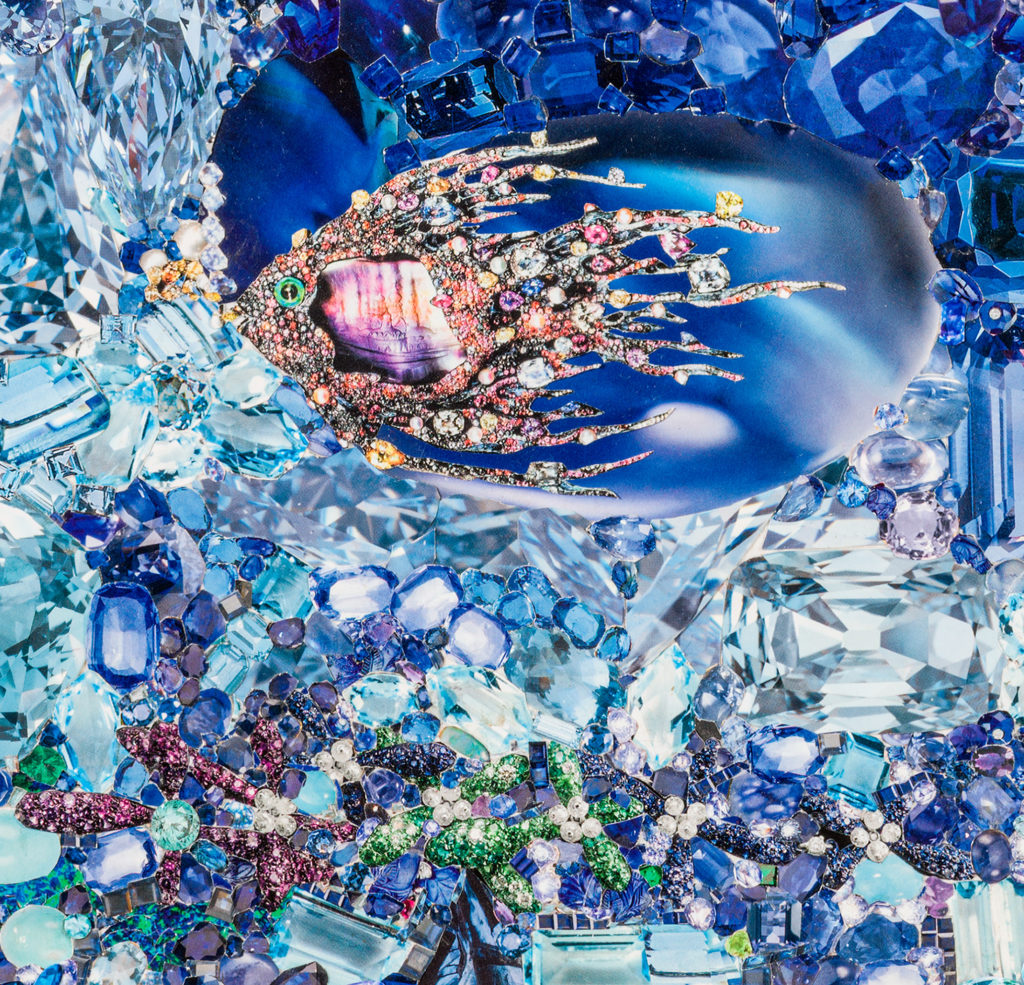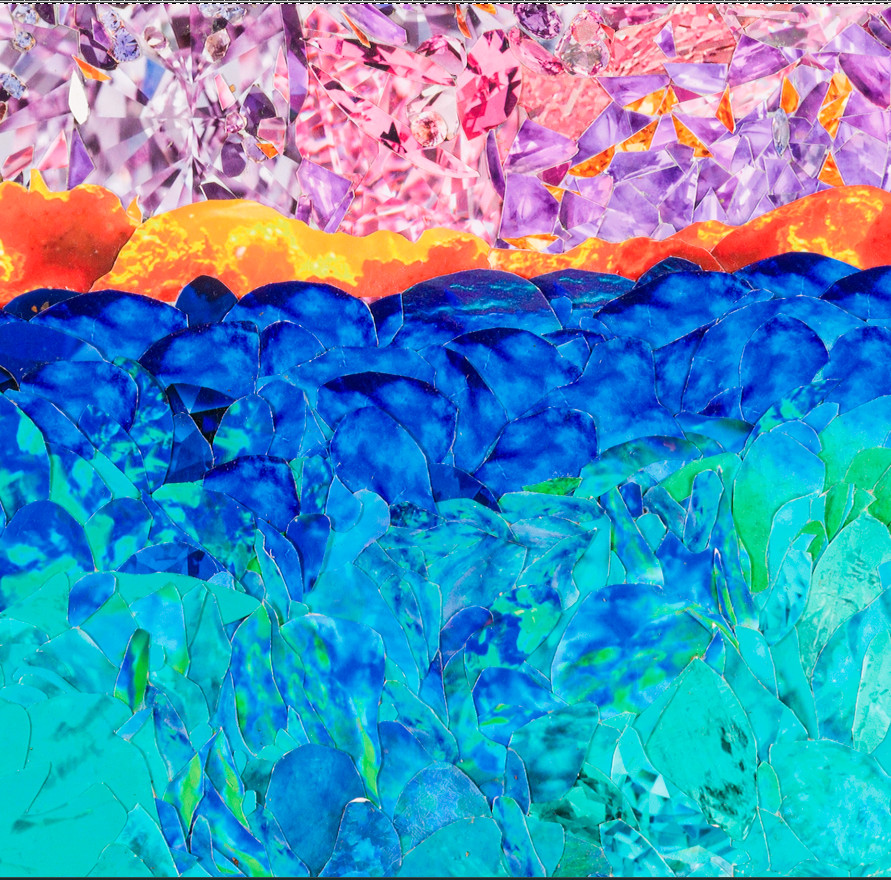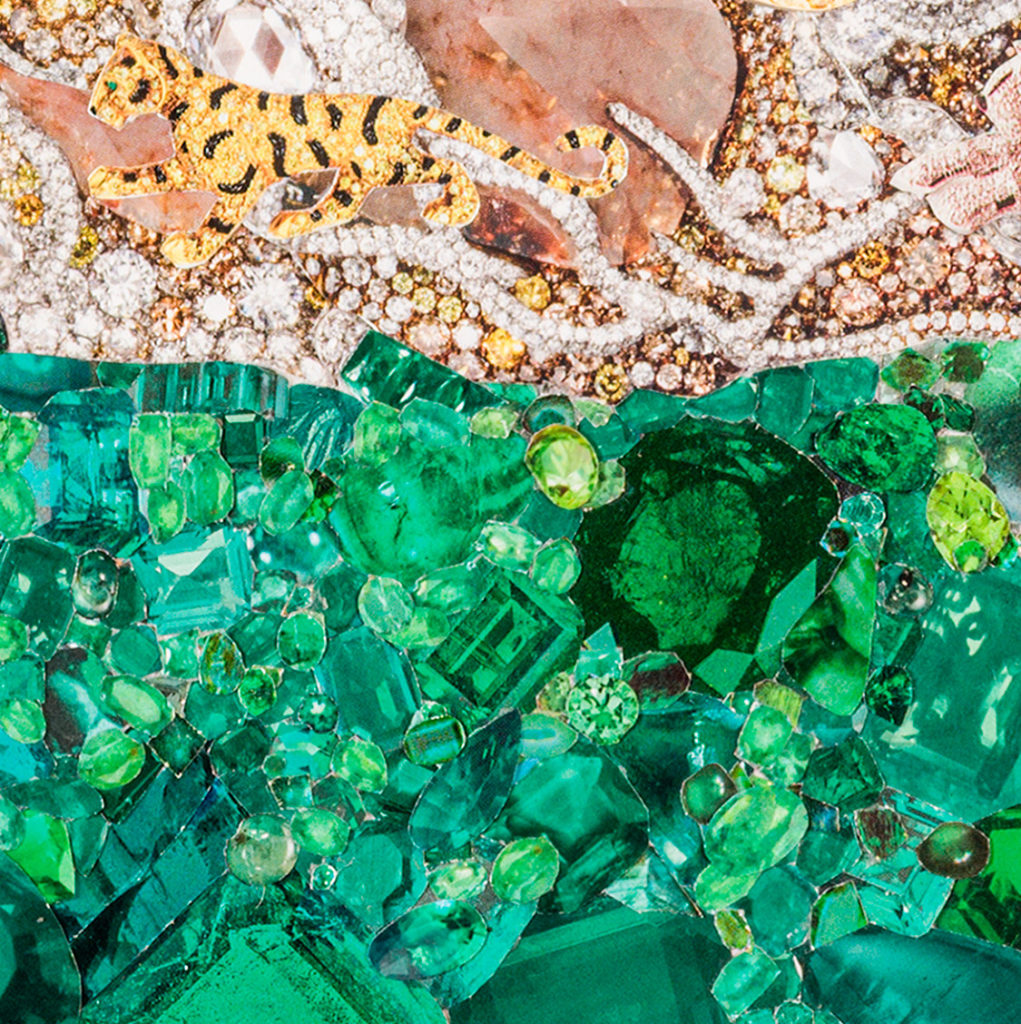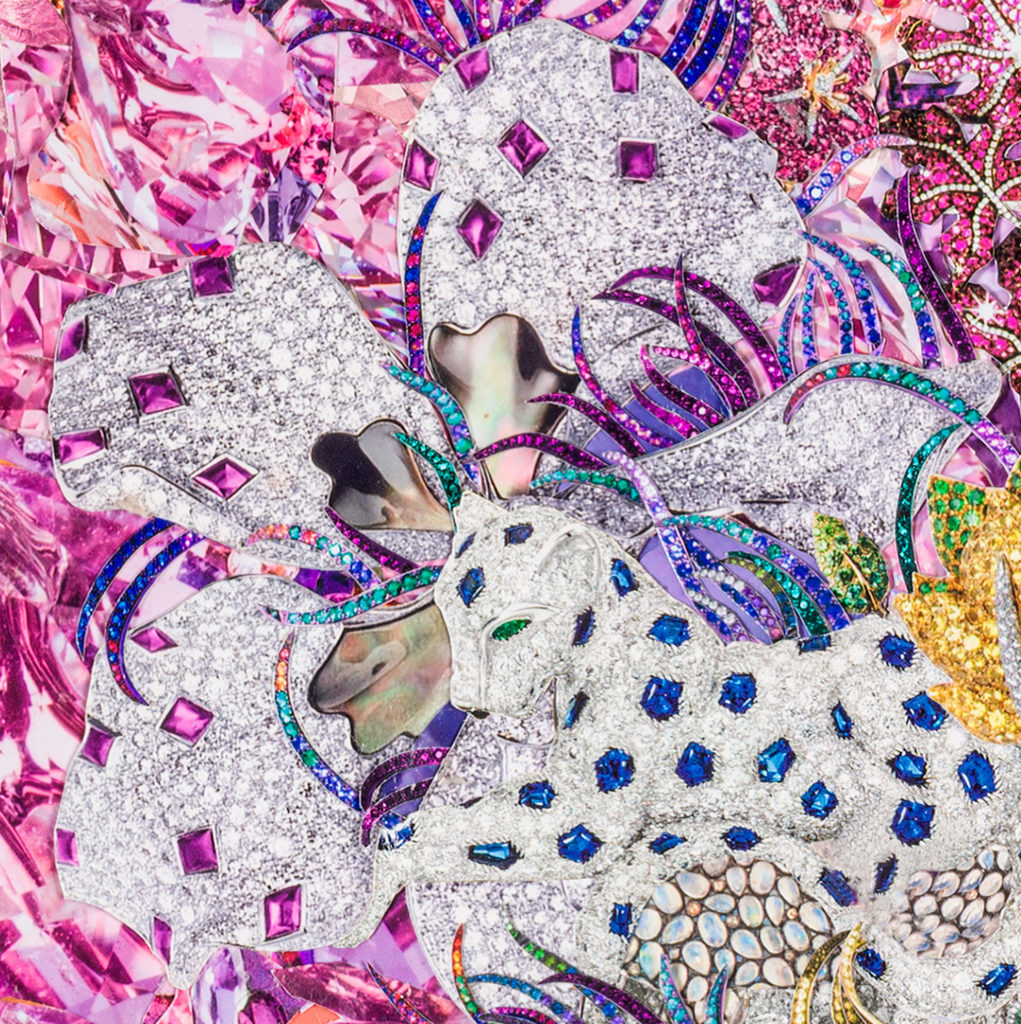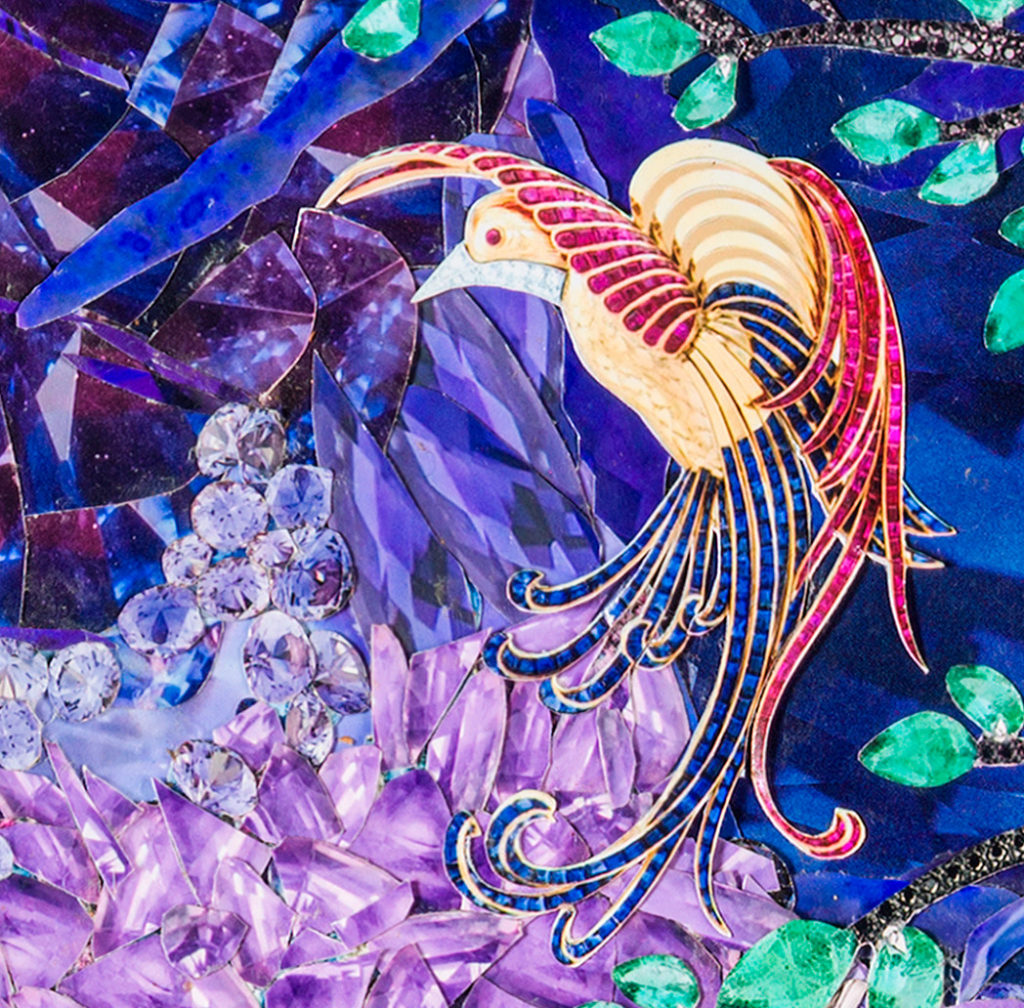Motherhood
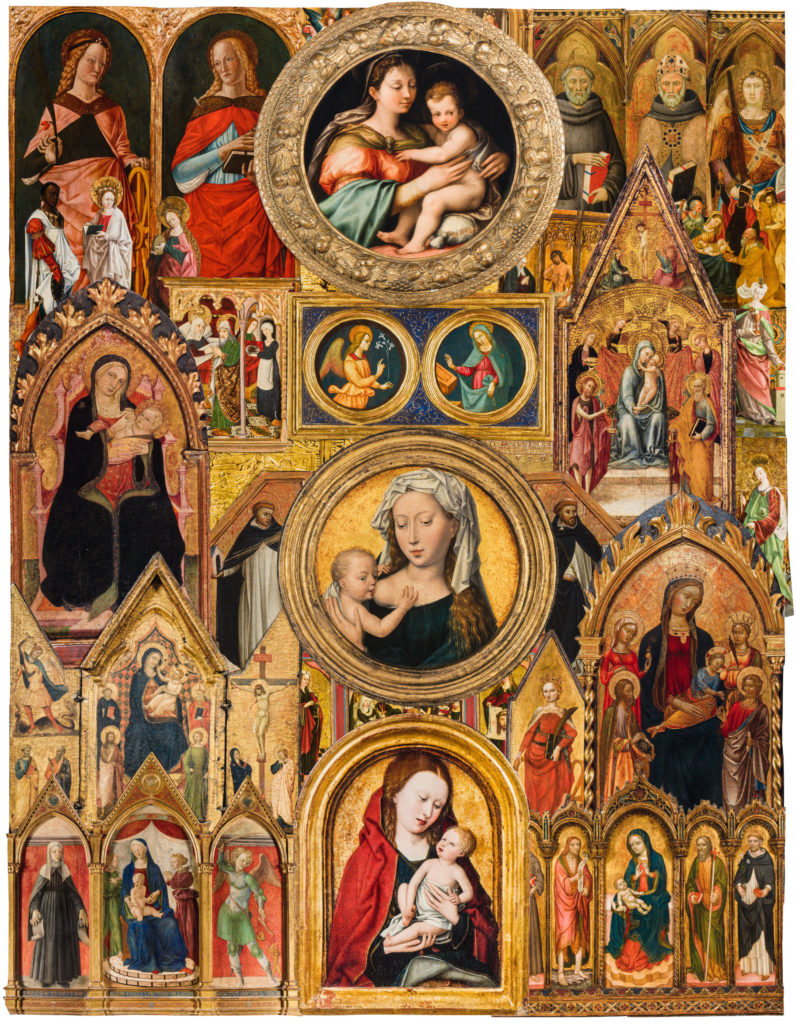
Lack of support and the crumbling foundation of families has turned motherhood into a burden. The icon of the serene and saintly Maria is replaced by an image of the overworked, frantic mother.
Lazarus Siakos, Motherhood, paper cutouts, glue, 50 x 65 cm, 2022
© Photography Boris Kirpotin, September 2022 Athens, Greece boriskirpotin@yahoo.com www.kirpotin.gr
The image of woman symbolizing fertility, pregnancy and motherhood is as old as modern human. In the Christian religion the image was adopted as an icon of Maria with child Jesus. This projection of the ideal woman and mother was reproduced over and over again, the Madonna beautiful, devoted, and docile. As most ecclesiastical iconography and texts, it was devised by men in order to establish a hierarchy and expectations. It stands in stark contrast to the present perception of motherhood with women taking the blame for overpopulation and the lack of resources and sustainability that stems thereof. Since the feminist movement, the number of single women and working women has increased drastically but society often fails them. Lack of support, and the crumbling foundation of families with members who could possible help out, has turned motherhood into a burden. Serene and saintly Maria is replaced by the image of the overworked, frantic mother. Nor has the obsession with body and physique helped the cause of motherhood. If the first image responds to the male gaze then the second image can barely serve to satisfy the female gaze, which leaves us to wonder what we as society exactly expect from motherhood.






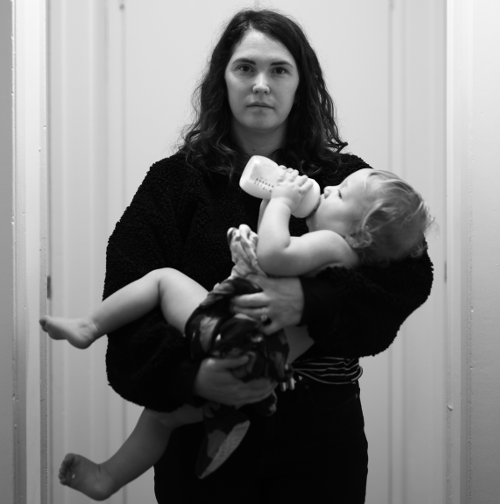

Photo Credits: Unsplash
The Beauty Trap
“As an artist, I work the collage not simply as a juxtaposition or assemblage of images and/or objects but as an intricate web of stones, colours, reflections, and stories. Inspired by my childhood memories, I apply the natural qualities of gems, such as tone, texture and design, and their mystical and metaphysical properties to art.”
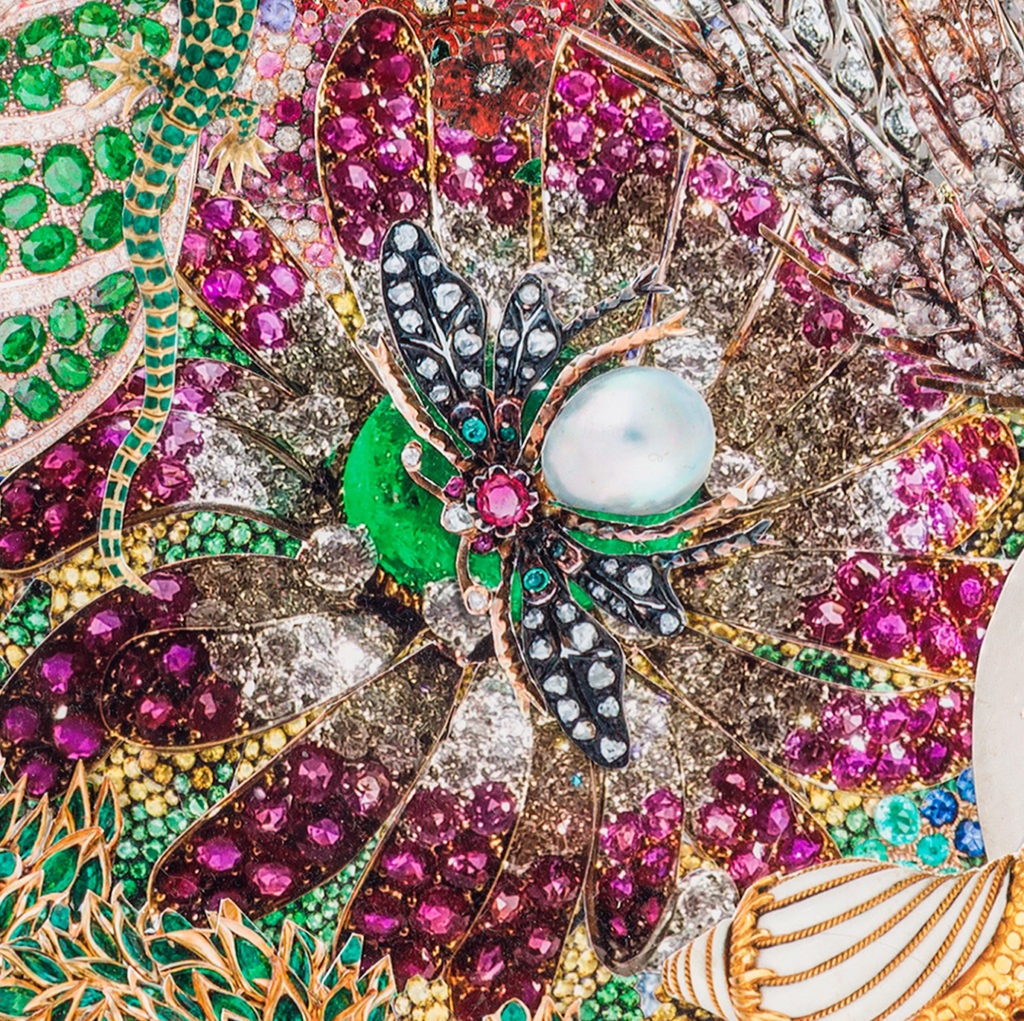
What man has done to perfect nature,
quipped Harry Winston, the famous jeweller and gemmologist, whose passion for diamonds has been well documented. Boastful, perhaps – nature after all seems superior in all respects – but there is a truth in man’s ability to hew out of the rocks and dig up from the soil rough minerals that once polished, reveal their ultimate splendour. And sparkle they do! For centuries, with techniques becoming increasingly sophisticated, man has managed to cut precious and semi-precious stones to a near perfect state. Brillantism, the artist calls it, the skill to bring out the sparkle in matter by capturing, reflecting and withholding light. The appeal of the gem minerals was so great that since ancient times and across cultures, they have been bestowed with mystical powers and are whispered to protect, empower, heal but also harm, bring misfortune or put a curse. Each stone is imbued with a spiritual soul, beyond its shiny surface, and into the depth of its transparency.
Entitled The Beauty Trap, the work recycles desire into desire, from the attraction to gems to that of art. The collage captures the battle between the material and the spiritual worlds, plays on the transience of ownership, and questions the nature of superficiality as opposed to the soul at the heart of all matter.
Brillantism is rooted in my childhood when I imagined bejewelled objects to embellish my surroundings. I grew up, fascinated by the allure of gems and the arts. I formed collections, which in turn led to entities. After a long search for the ultimate expression, I turned to the medium of collage as a means to achieve true self-actualization, with the idea of Brillantism as a driving force. As an artist, I work the collage not simply as a juxtaposition or assemblage of images and/or objects but as an intricate web of stones, colours, reflections, and stories. Inspired by my childhood memories, I apply the natural qualities of gems, such as tone, texture and design, and their mystical and metaphysical properties to art. These were the challenges that underlie ‘The Beauty Trap’ as a first work in an attempt to introduce Brillantism. The technique evolves and the story unfolds throughout the painstaking process as each piece, some of them as small as a one millimeter diameter circle, adds to the overall composition. The delicate buildup produces a painterly effect with the many colour graduations as brushstrokes.
Brillantism seeks to reconnect with the deeper aesthetic, philosophical and historical perceptions of beauty, and to recognize beauty as an essential human need. Whereas beauty has been alternately defined as a conduit for the soul to transcend the body, as a cause of love and longing to possess, and as a form of energy and motivation, it was modern art that cast beauty aside as bourgeois, corrupt, and redundant. Contemporary art sought to engage the intellect directly into its meaning whilst contemporary society attached increasing importance to exterior beauty translated into luxury, unbridled by ethical concerns and driven by commercialism and pop culture. The ideals of virtue and contemplation were replaced by sensual pleasures and indulgence, and beauty as synonym for pure and good has become equal to vanity. The allure of gemstones closely follows the interpretations of beauty as emblems of power, wealth and wisdom, revered for their permanence and imbued with magical properties and colour-based virtues transferred to the wearer. Nowadays, precious stones are set in opulent jewellery, not amulets, crafted to adorn the famous and the rich.
The Beauty Trap constitutes a first reflection on this subject in the belief that beauty shows respect and gratitude for our very existence. In this first work, mind and matter meet over confusing connotations and renewed debates over the nature of beauty.
Two things fill the mind with ever new and increasing admiration and awe, the oftener and the more steadily we reflect on them: the starry heavens above and the moral law within.
Immanuel Kant, Critique of Practical Reason, 1788.

Lazarus Siakos, The Beautry Trap, paper cutouts, glue, 70 x 254 cm, 2022
© Photography Boris Kirpotin, September 2022 Athens, Greece boriskirpotin@yahoo.com www.kirpotin.gr
DESCRIPTION
The Beauty Trap is a large scale collage of paper cut-outs from recycled printed materials such as magazines and auction catalogues, and from digital printouts of jewellery and gems. Thousands of images were used and even the tiniest piece reflects the hue of a precious or semi-precious stone, turning the arrangement into a brilliantly coloured scenery with infinite designs, shades and subtle graduations. The title refers to the controversial concept of beauty, which in contemporary times has been associated with attractive, decorative or shallow. However, there is more to beauty than meets the eye. Umberto Eco in his twin publications ‘On Beauty’ and ‘On Ugliness’ alludes to the changing and elusive nature of both notions. In our rational world that shuns emotional and fantastical expressions, the meanings have but shifted and are rooted in reality rather than the imagination. Our fascination with crime series, serial killers and murder investigations is akin to the medieval attraction to fabulous monsters and other ghastly creatures. When celebrating beautiful people, our present admiration is far removed from the sophisticated emotions that Dante describes upon viewing his great love, Beatrice. As in ancient Greece, he links beauty with morality using words as pure, lovely, virtuous, and gracious.
Her bearing is so noble and sincere,
people can hardly call to mind her ways
before they sigh in reveries of love.
Beauty cannot be captured and cannot be owned. It is a quality and not a subject nor an object. Many writers have expressed their disappointment, disillusionment or frustration when beauty escapes them:
The flower that smiles to-day
Percy Bysshe Shelley, The Flower That Smiles Today
To-morrow dies;
All that we wish to stay
Tempts and then flies.
‘And when I go to get a glimpse of you,
beauty, what meets me dies in memory.
And when you’re near, Love tells me what to do,
he says, “if perishing disturbs you, flee!”
Dante understands that, in order to overcome the temporality of beauty as in death and decay, we have to find solace in inner beauty:
[…]
Dante, La Vita Nuova
because the pleasure of her lovingness,
once it had left our sense of sight behind,
became great spiritual beauty then,
[…]



Dazzling or intoxicating, the trappings of beauty repeatedly spelled the disgrace or even fall of man. Lazarus Siakos uses archetypal language and experiments with gems to tackle the notions of fatal attraction and perpetual temptation. At the centre of the collage, the world is set as a stage with the family as its nucleus symbolized by woman. She balances precariously on the diamond that envelops the egg – the beginning of life -, whilst hidden in the foliage predators lurk and inspect their hunting grounds. Water, which transcends memory and consciousness, runs through the composition as the story unfolds and reveals its many inner stories. Umberto Eco’s beautiful sea monster, lending meaning to its opposite, leaps out from the water to catch prey. The large purple bird in the sky symbolizes the passage of time, an omen of freedom and perspective. The sunset with its vivid colours lures the viewer and draws him closer and closer toward a promised Garden of Eden where flowers blossom, butterflies flutter, paradise birds sing and treacherous snakes patiently eye the visitor. The Tree of Life hovers above a big pearl in the corner. Or is it a large snake egg, thereby raising the question whether it represents beauty or contains the seed of evil? Can outer beauty hide an ugly heart and inner beauty be encapsulated in ugliness, darkness and sin, the kind of beauty Baudelaire explored? Do all living things have a propensity for good and/or a capacity for evil as ruled by the Tree of Knowledge? Are certain traits favoured by natural selection and therefore more suited to the survival of humanity?
Each gem holds in its core a microcosm that tells the history of the world, a universe – perhaps a god particle – that exudes energy translated into vibrations as in colour and sound. The ever changing shades produce a seductive melody that winds itself through the landscape, accompanied by the sounds of the jungle that reverberate, and the whispers in the trees from rustling leaves. It takes on the structures and rhythms of visual poetry. The Beauty Trap is a work that fills up the senses and resonates with human experiences. It tantalizes ownership.
We end with another quote from Dante’s Purgatorio describing the Sapphire Sea that underlines the importance to the creative imagination of gems:
Sweet hue of eastern sapphire, that was spread
O’ver the serene aspect of the pure air, […]


